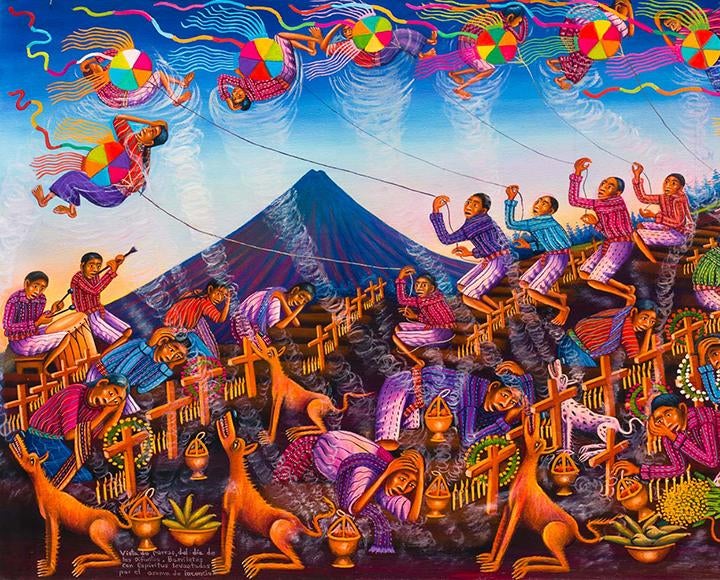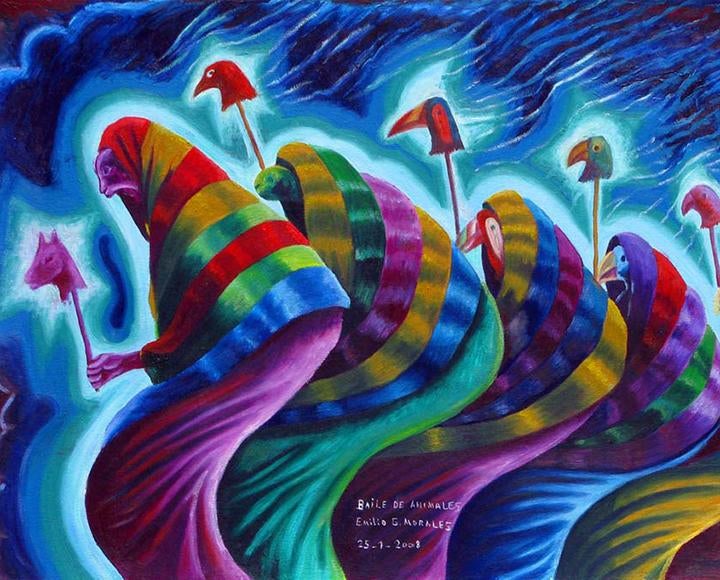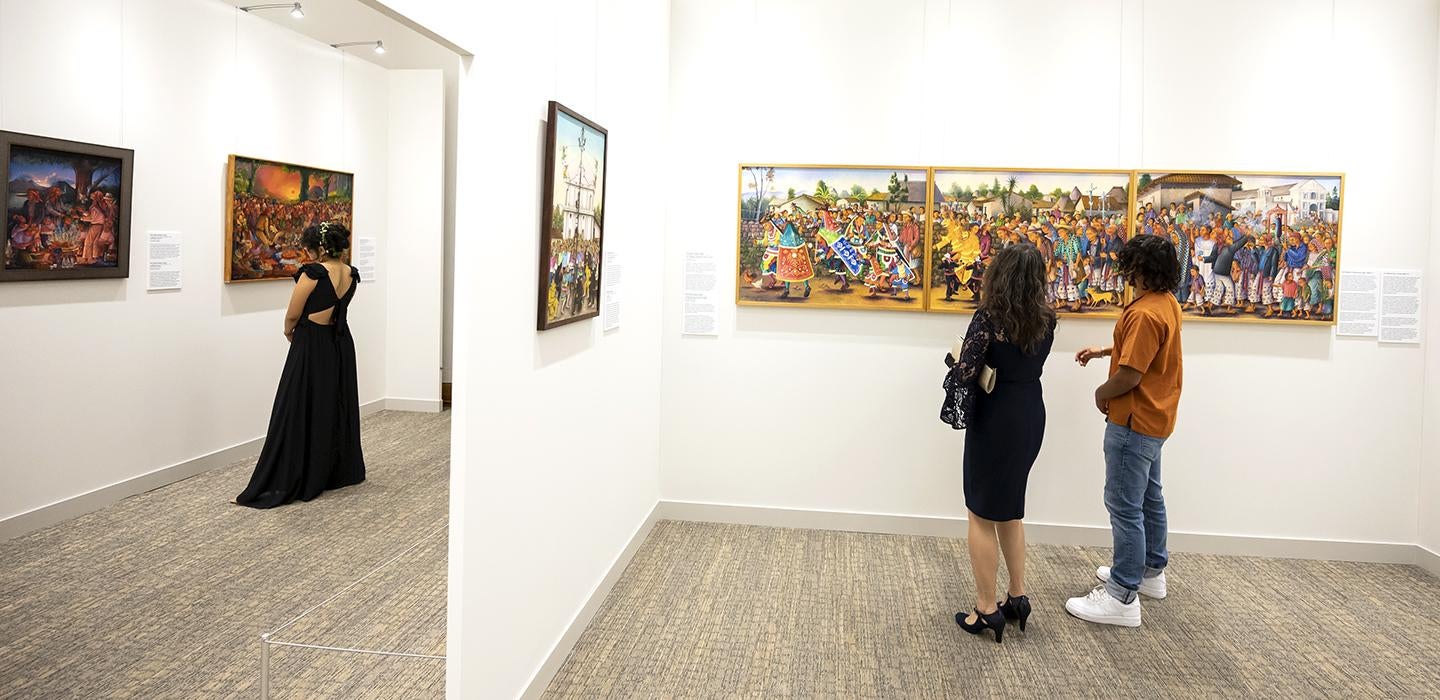
Subscribe to Pittwire Today
Get the most interesting and important stories from the University of Pittsburgh.Mati Castillo says her identity is deeply rooted in her community.
The senior Latinx Student Association president spent the summer excavating and surveying Mayan sites with the Belize Valley Archaeological Reconnaissance Project. Under the direction of Pitt anthropology assistant professor Claire Ebert, the Oxnard, California, native and Spanish and anthropology double major walked away with more than a historical understanding of the area.
“We emphasized community archaeology and worked with Mayan descendant communities to ensure local input,” said Castillo.
As she returned to Pittsburgh to finish her studies, she felt a renewed need to create a strong sense of community for students who, like her, long for more cultural ties and reminders of home on campus.
Today’s opening of the Latin American Cultural Center and Museum (LACC) in the Schenley Farms Historic District offered her hope and a sign that the city is prioritizing Latinx and Hispanic history and perspectives.
“I was so excited,” she said. “There are so few places within Pittsburgh that reflect this.”
LACC is an initiative of the Latin American Studies Association (LASA), the largest professional association for scholars studying Latin America, with about 14,000 members globally. The center is next to the University-owned Twentieth Century Club and dually serves as LASA’s new headquarters.
In addition to offices, LACC houses a museum, auditorium and versatile spaces designed to engage Latin American arts, cultures and history.
Castillo said learning that the first museum exhibit is “Maya Spirituality: Indigenous Paintings 1957-2020,” was especially meaningful.
“It shows history and the present,” Castillo said. “Mayan groups are still here today [and] still practice many of these traditions. The exhibit will help people realize that these cultures aren't dead or far in the past.”
The exhibit, which debuted during a private fundraiser on Sept. 15, was curated by Joseph Johnston and Rita Moran over several decades and credits contributors like Tz’utujil artist Oscar Fernando Saquic Nix.
“The paintings tell a wonderful and tragic story about Mayan Indians during the Guatemalan civil war, repression and of Mayans trying to recapture and resurrect their own identity, and weave their society back together,” said Bill DeWalt a LASA senior advisor who guided LACC’s development.
“It’s wonderful to open the center with this exhibit,” said DeWalt. “It’s Hispanic Heritage Month, and the museum is about Hispanic heritage, the peoples of Latin America and at least 20,000 years of history.”


Why Pittsburgh is the place
DeWalt describes LACC’s location near campus as predestined.
He joined the Graduate School of Public and International Affairs as a professor in 1993 and as director of Pitt’s Center for Latin American Studies (CLAS), positions he said allowed him to research his “first love” — Latin America.
Seven years after his arrival, he said, “One of my CLAS board members brought me to that building and said, ‘Bill, you ought to move CLAS into it.’” DeWalt was fond of the space but worried it required too much renovation.
In 2011, LASA, began searching for a building to accommodate their expanding organization. That July, LASA’s executive director Milagros Pereyra-Rojas happened to stumble upon the same building.
“‘The Dark Knight Rises’ was filming in Pittsburgh and I was driving around friends visiting me,” said Pereyra-Rojas. “I drove by that building, looked at it, and said, ‘This building is going to be for us. That’s what we need,’ and it’s our building now.”
Though acquisition discussions began in 2011, LASA didn’t purchase the building until 2019. DeWalt, Pereyra-Rojas and their collaborators said it was well worth the wait.
“We’ll host many events — performances, lectures, film series — to celebrate the arts and culture of those 18-20% of people who live in our country,” said Sylvia Keller, a LASA senior advisor who is also DeWalt’s wife. “It’s a way for people who aren’t rooted in that to have greater appreciation and understanding for the richness and diversity of those cultures.”
Pereyra-Rojas said LASA settled in Pittsburgh because of the organization’s connections with the University of Pittsburgh.
“We have this historical connection to Pittsburgh and the University,” added DeWalt, citing LASA’s part-time presence in the city since 1986. “During development of the center and museum, I relied on professors like James B. Richardson, III, Pitt archaeology professor emeritus, to provide content and feedback on the exhibits.”
LACC also has budding partnerships with organizations such as the Pittsburgh Pirates; the Carnegie Museum of Natural History, Pitt’s Nationality Rooms and Pittsburgh public, private and parochial schools.
Castillo said the LACC partnership she’s most excited for is between scholarship and community.
“In Latin America, we’re not one group,” she said. “You may have a name like mine but what's your story? Where are you from? What was your experience? All that informs our different identities, community and political consciousness. Scholarship without community [and understanding] feels disingenuous.” She hopes LACC can be a place where people realize “it's not just people over there, it's people here too.”
“This is a dream come true,” said DeWalt of the new center. “Looking at this building and how many of us said, ‘This is going to be ours,’ I think of an important thing Latin America has contributed to the world in terms of literature. It’s called magical realism. Our whole story, the development of the center and museum, it’s magical.”
LACC is open Tuesday through Thursday from 10 a.m. to 2 p.m. Tickets must be purchased in advance of your visit.
— Kara Henderson, photography by Aimee Obidzinski, artwork from LACC’s Arte Maya Collection


